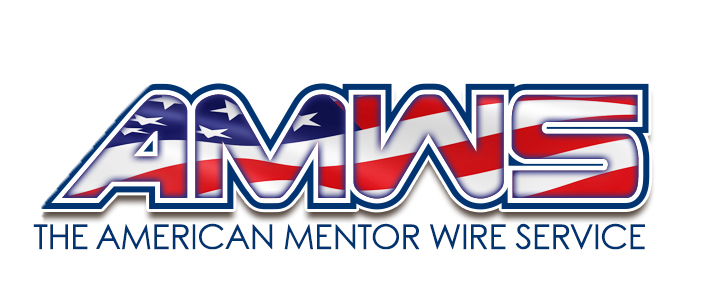All
aboard the train from Poverty
By Eric
Stradford, U.S. Marine Corps, Retired
AMWS,
December 9, 2019, Atlanta – Imagine, if you can, a mountain top view where learners
might envision an end to poverty. Well, another
#GivingTuesday
has passed. Sources say some $511M was
raised on the day of giving--a 28% increase from 2018. Over a half billion was raised, and yet way
too many children are still growing up poor.
If you’re
waiting for a way out of poverty, you may want to look to Generation
Alpha. That’s the generation, born
between 2011 and 2025. They’ll reach age
19 by the year 2030, and they are not interested in growing up poor.
The Urban
Institute, The Bill and Melinda Gates Foundation, and a plethora of policy partners
have climbed the proverbial mountaintop to reveal a problematic future. As Xers and Millennials plot their next step,
YouthUSA is looking to Generations Z and Alpha for help. NO POVERTY by 2030 means children in low
income families growing up less poor, starting today.
Over the
weekend, a corporate vision to merge SunTrust
and BB&T is showing evidence of a 21st Century reality. Truist employees took to social media to project
confidence in an unknown brand. “Three
of the most common words associates and teammates used to describe each of the
companies' cultures were trust, caring and integrity,” Truist reports. But, not
one on a team of more than 100 have responded to our question, “What’s a Truist?.”
As Truist clients
seek common understanding of the values, “trust, caring and integrity,” the U.S. Partnership on Mobility from
Poverty has invested
some intelligence on how we might leverage a $60 Billion Community Benefits Plan to end poverty in the U.S.
In 2019,
YouthUSA established FDIC Insured savings at SunTrust Bank. We met with our branch manager and shared our
vision for a Money-n-the-Bank deposit of $100 thousand dollars. SunTrust agreed to growing our money at an
interest rate of 2% or better—but not forever.
Money-n-the-Bank at SunTrust reflects the collective corporate asset
held on behalf of YouthUSA economic beneficiaries, aka “Two Percenters,” those
who make things happen. WINNERS corporately
“believe I can achieve whatever I believe I can achieve.” QUITTERS need not
apply.
In 2020,
expect the SunTrust brand to diminish as the Truist brand emerges. Along the way, YouthUSA approached SunTrust
Foundation to support a Learning Journey which would have provided a seat at
the table for the BB&T SunTrust merger.
Who needs a seat at the table?
SunTrust managers and executives struggled with answers pondering their
own fate after the merger.
Once
SunTrust Foundation ignored our proposal, we reached out to an old friend at
BB&T. Tamika Stafford had been
extremely helpful in making things happen for new homeowners in the Atlanta
area. But, when a complex solution
required an established trust, PNC proved to be the right brand at the right
time to partner on a unique model for #EconomicInclusion.
In late 2018,
YouthUSA corporate leaders took a chance on SunTrust, only to learn of the
pending merger. Now, we’re reaching out
to any banker with enough trust in Truist to invest time or money in TWO
PERCENTERS.
QUESTION: What can you do with $100 million in Community
Reinvestment?
ANSWER: Engage beneficiaries in a vision of their own American
futures.
NEXT QUESTIONS: How many beneficiaries? What is the program
cost per beneficiary? What are the expected outcomes?
NEXT ANSWERS: YouthUSA Money-n-the-Bank qualifies
100 beneficiaries for #EconomicInclusion by 2025. New beneficiaries are Americans, age 7-24.
The program
matches a grassroots community reinvestment of $5 per person from twenty caring
adults.
The cumulative
$100 establishes an IDA savings account at Truist.
YouthUSA
matches each IDA $10 to $1 for a total value of $1100 per beneficiary.
The bank matches
each YouthUSA IDA $10 to $1 for a total value of $11,000.
The U.S.
Treasury (CDFI) matches each $11,000, $10 to $1 for a total of $110,000 per
beneficiary.
One hundred
(100) economic beneficiaries, each banking $110,000 at an interest rate of no
less than 2% is an $11,000,000 return on a $100 million community reinvestment
commitment.
Americans,
born between 2011 and 2025, will reach age 19 by the year 2030, and they are
not interested in being poor. They will
need to ENVISION
an end to poverty by 2020 to achieve NO
POVERTY by 2030. The United Nations
(UN) adopted 17 Goals
#WeThePeople need to come together on.
NO POVERTY
is No 1 of 17 things to get done before #GivingTuesday2030. Get this one right and we’re well on our way
to becoming “a more perfect union” in their lifetime. You could say that Generation Alpha is our new
beginning. Join us at www.YouthUSA.net.









